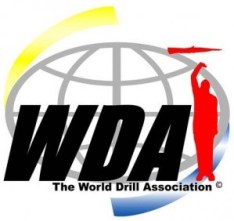Back when I was about nine or 10 years old my family went out to what was supposed to be a really nice restaurant in Sun City, Arizona. My grandmother, father, mother, sister and I looked forward to having a relatively expensive but nice meal. We had reservations and walked in with plenty of time. As we entered the hostess took one look at me, a little boy in a nice pair of jeans and button-down shirt, and literally gasped out loud while putting her hand over her mouth and widening her eyes. It was such a blatant and stupid overreaction that my father immediately got fed up with her and asked to speak to the manager since we were told the restaurant did not allow “dungarees.” We were eventually seated and had a great meal and the restaurant, amazingly, did not explode because a little boy entered wearing “dungarees.”
 This same sort of reaction happens now and then in the military drill world during the exhibition drill (XD) phase of competition. Only the “problem” here, like a little boy wearing jeans, is that during a performance someone “breaks bearing.” This “problem” only exists in someone’s mind.
This same sort of reaction happens now and then in the military drill world during the exhibition drill (XD) phase of competition. Only the “problem” here, like a little boy wearing jeans, is that during a performance someone “breaks bearing.” This “problem” only exists in someone’s mind.
As I recently wrote to the reader of one of my books, XD is not “prettied-up” regulation drill (RD). There isn’t any military regulation that covers XD; stop bringing your bias (certain expectations) or what you think you know or what you think the way things ought to be, to a competition. Let XD evolve with the imagination of the Driller or team.
All you do when you bring certain expectations to a competition is set yourself up to fail and if you are a judge, you make things worse for everyone involved.
When it comes to RD, we have guidelines to which we must pay strict attention and heed every letter in the form of each services’ drill and ceremonies manual. When it comes to XD, we have our imagination to let loose within the guidelines of the standard operating procedure (SOP).
How unfortunate that some are unable to appreciate another’s creative abilities. Something new may be uncomfortable to you but life is full of new experiences and that should be no different for the military drill world.

 Your team should have standardized responses for each team member when addressed by an inspector. Something like these would be good:
Your team should have standardized responses for each team member when addressed by an inspector. Something like these would be good:











